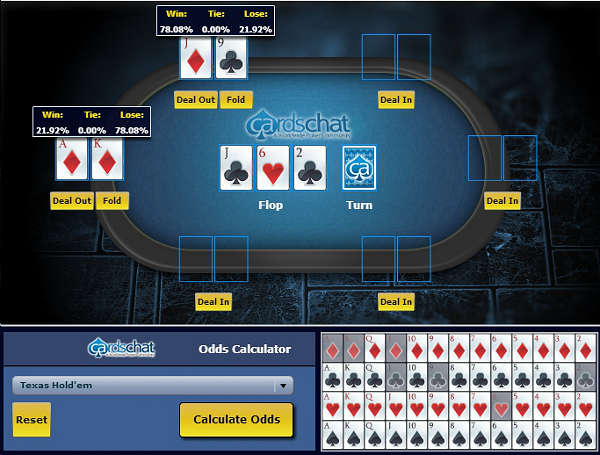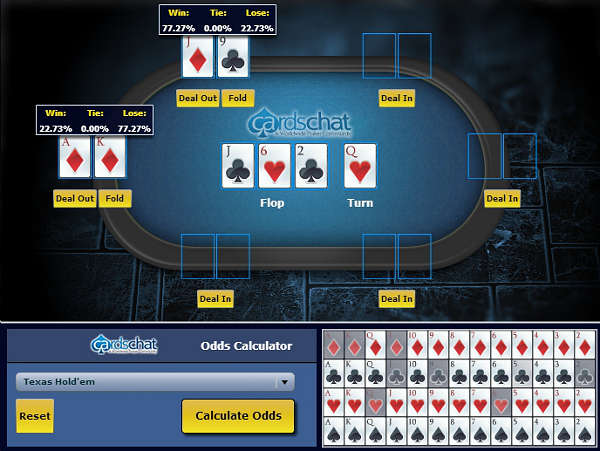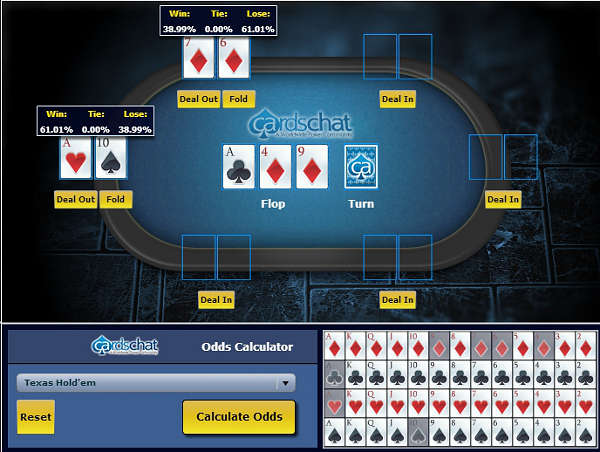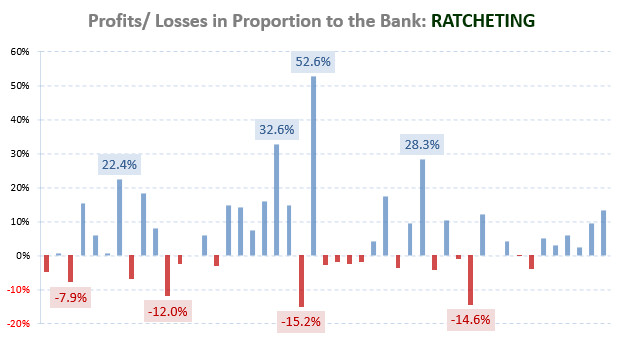
Example 2: Big Slick Post-Flop
When we consider the scenario shown below it becomes clear that despite Ad Kd having the advantage pre-flop, when the flop rolls out Jc 6h 2c it becomes a 78.08% underdog to Jd 9c.

Example 3: Hitting the Turn
Taking this one step further we can input the Qh on the turn and the odds change once again. This time the Ad Kd has gained almost 1% and stands as a 77.27% underdog with one card to come.

Piecing it All Together
The main reason for running scenarios through a poker odds calculator is so you can work out whether or not the pot is offering your sufficient odds to proceed with your hand. This concept is known as pot odds and is best illustrated by running through another scenario.
Counting the Outs
Look at the image below. When we take Ah Ts and pit it against 7d 6d pre-flop we can see that the former is the statistically stronger hand.
However, when we input a flop of Ac 4d 9d you’ll notice that 7d 6d still has a 38.99% chance of winning the hand.
This is because it has a high number of outs (cards that will give it a winning hand) with two cards to come. In this situation we have 15 outs (nine flush cards, three sevens and three sixes) and two chances to hit them.

Knowing this fact is important because the player holding 7d 6d can now work out if it’s profitable to continue in the hand after a bet from their opponent.







